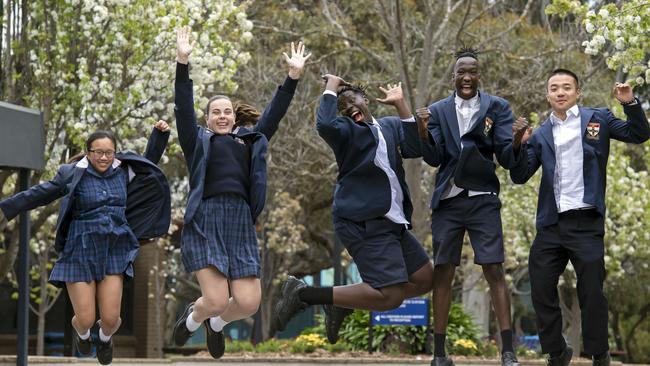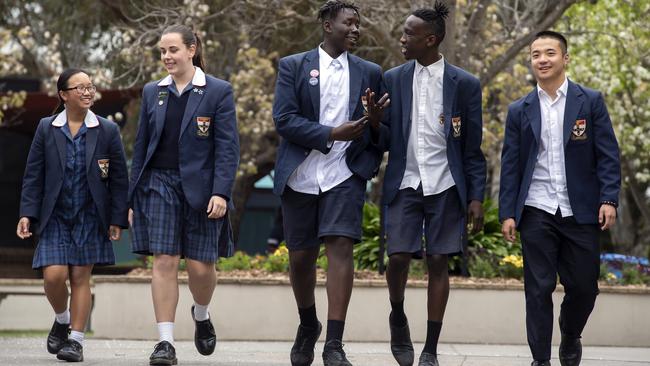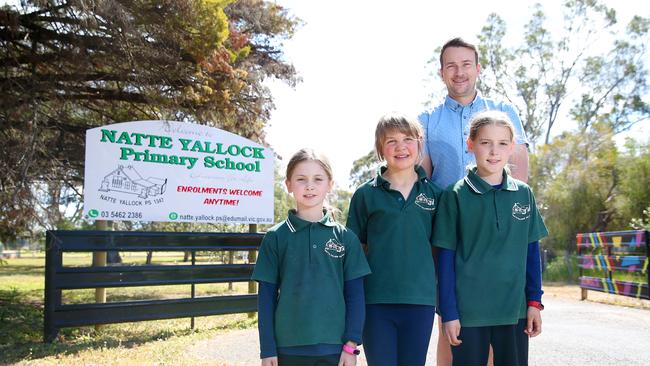Funding v capital works: What every school in country Victoria gets
Regional Victoria’s schools with the most and least government funding are revealed in this exclusive analysis. Discover how much funding your child’s school receives.

Schools Hub
Don't miss out on the headlines from Schools Hub. Followed categories will be added to My News.
THERE is a vast difference in funds allocated to schools across regional Victoria, an independent compilation of statistics from the MySchool website has revealed.
Three schools near Beaconsfield, on the eastern fringe of Melbourne, received eight and nine-figure sums from government coffers during 2015-17 while some rural public schools relied on less than $400,000 in the same period.
Publicly available figures from the MySchool website show Catholic secondary school St Francis Xavier College, at Beaconsfield, east of Melbourne, received $101 million in state and federal government money from 2015-17. It had 2934 students in 2017.

Independent school Beaconhills College, at nearby Pakenham, received $77.7 million, while Narre Warren South P-12 College received $67.9 million.
The figures reveal exactly how much money every school received from government funding over 2015, 2016 and 2017 calendar years and how much money has been spent on capital projects over the 2015, 2016 and 2017 financial years.
Figures show Traralgon Stockdale Road Primary School, in Gippsland’s Latrobe Valley, was the government school in regional Victoria that received the least funding per student, at just $8236 per child in combined state and federal government funding in 2017, while some independent schools received more than $18,000 per student in public funds.
The Victorian average in 2017 was $10,762 in government funding per student across government, Catholic and independent schools. That year more than 25 per cent of schools in regional Victoria received less than average.
Victoria’s Education Department said Traralgon Stockdale Road Primary would receive an additional $190,000 in funding next year compared to this year, representing a boost of about $380 per student.
SEARCH FOR YOUR SCHOOL:
SCHOOL INCOME: REGIONAL VICTORIA’S SCHOOL EARNINGS REVEALED
PARENTS VOW TO FIX CRACKS IN THE SYSTEM
COUNTRY VICTORIA SCHOOLS’ STUDENT-TEACHER RATIOS REVEALED
GROWTH RATES OF EVERY SCHOOL IN COUNTRY VICTORIA REVEALED
A Department spokesman said the State Government’s funding model ensured schools with greater levels of disadvantage received more funding per student.
“We want every child in every school to have the opportunity to fulfil their potential. A child’s school results should not be restricted by their background,” the spokesman said.
“This year we signed up to a new bilateral Commonwealth funding agreement, which has secured Victorian state schools an additional $9.8 billion in funds.”
Not-for-profit organisation Teach For Australia said funding was just one measure of a school’s ability to deliver high quality education to regional and rural students.
“Achieving educational equity is a complex issue with many factors and research shows that the solutions involve more than money,” said Teach For Australia chief executive Melodie Potts Rosevear.
“Ensuring rural schools’ educational outcomes are on a par with their urban counterparts is crucial to the health of regional, rural and remote Australia. Our communities are made stronger by our schools and conversely, terrific schools lead to more robust communities.”
Ms Potts Rosevear said one of the greatest barriers schools faced was recruiting high quality teachers to work in low socio-economic communities, many of which were in regional areas. Teach For Australia works with schools in regional, rural and remote locations across Australia to place high-quality teachers in hard-to-staff positions.

Goongerah Tubbut P-8 College, a tiny East Gippsland school on the NSW border with just six students in 2017, received the most government funding per student of any school in regional Victoria, with $104,619 for each child. Natte Yallock Primary School in Pyrenees Shire received $78,919 for each of its four students in 2017 and Glen Park Primary School, near Ballarat, received $75,067 for each of its three students that year.
During 2015, 2016 and 2017 financial years, Bacchus Marsh Grammar, in Bacchus Marsh, spent $28.6 million on capital expenditure, more than any other school in regional Victoria. In that same three-year period Marist College Bendigo spent $28.1 million on capital expenditure and Ballarat Clarendon College spent $27.4 million.

SMALL CLASS OF ITS OWN
NATTE Yallock Primary School has just five students and receives a small amount of government funding.
Yet parents say the school’s wise investment in digital technology, enthusiastic staff and collaborative approach offer their children an exceptional education.
“One of the big things is the student-to-teacher ratio is a massive positive to our school,” said acting principal Kane Tolliday, who joined the school this year.
“For these five girls, they have an extremely high amount of one-on-one time and I think it is beneficial to their learning,” he said.
Natte Yallock’s students receive specialist subjects, including Japanese, by web link. Once a fortnight they travel to one of seven small schools in the Pyrenees shire cluster for larger group lessons, to develop social skills and for extra-curricular activities.
“Being part of the cluster is a valuable asset where we go to participate in art, music and science,” Mr Tolliday said.
A parent said she chose Natte Yallock because of the staff and individual support.
“The teaching is individualised for every kid and ability level,” she said.
The school received $78,919 for each of its four students in 2017, the second highest per-student funding in country Victoria, but the total was one of the State’s lowest.
MORE EDUCATION
Originally published as Funding v capital works: What every school in country Victoria gets
